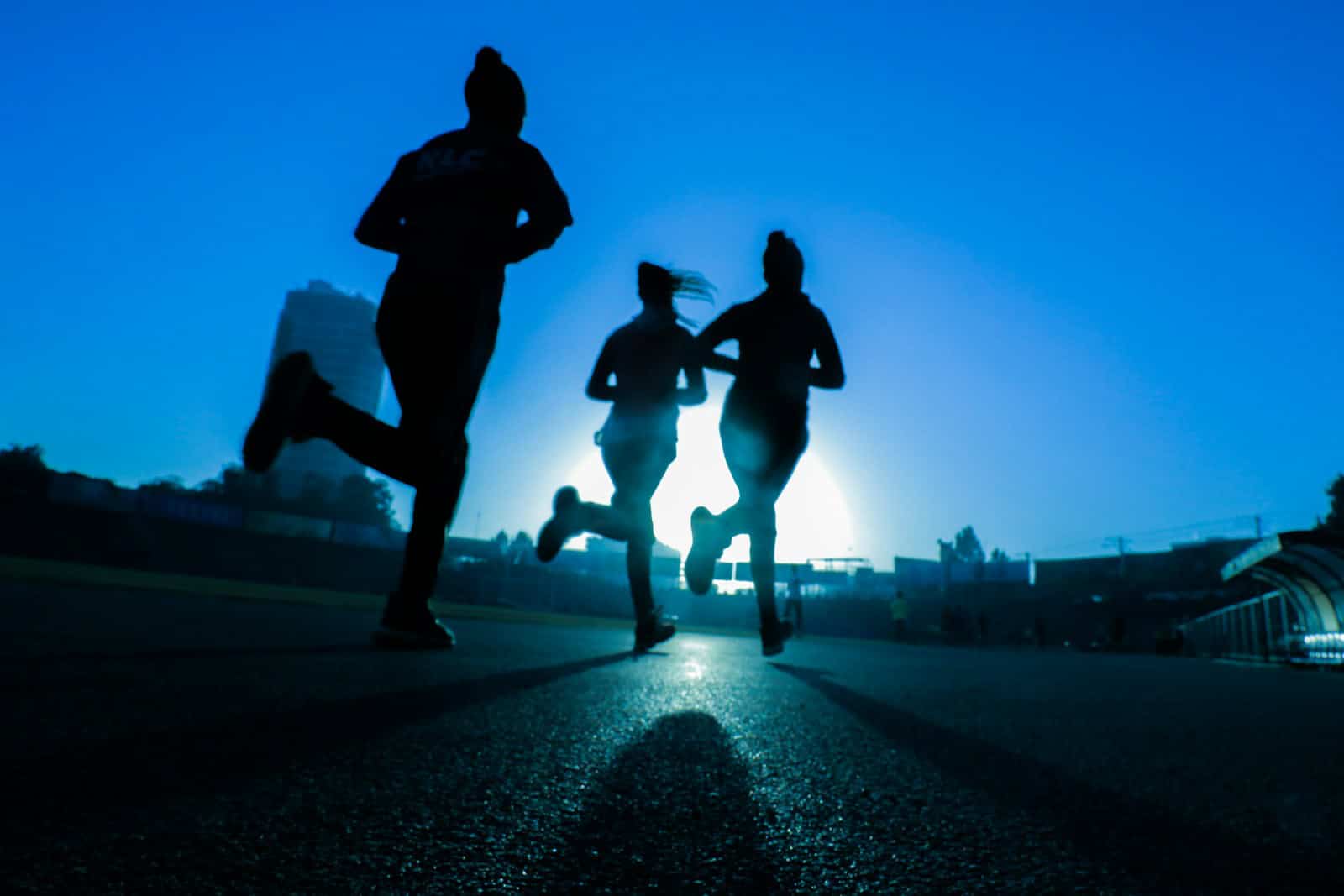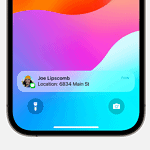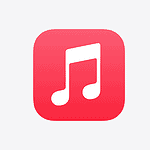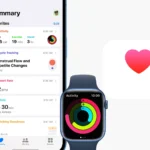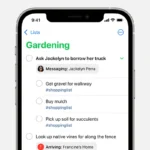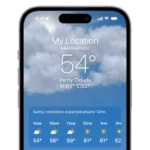Finding a running app that matches your goals in 2025 can feel overwhelming—there are now more than 300 fitness-tracking apps across the major app stores. The best options do far more than log distance and pace: they offer adaptive training plans, real-time audio coaching, social motivation, and deep health analytics that plug straight into Apple Health, Google Fit, and leading smartwatch ecosystems.
Below is a refreshed, feature-rich look at the standout choices for every type of runner—whether you’re lacing up for your first 5 K or chasing an ultramarathon PR.
1. Runna
/Homepage/runna-personalized-plans-for-you.webp)
Ideal for: Highly personalized training—from couch-to-5 K through 100-mile ultras
- Custom plans generated after a detailed onboarding questionnaire covering current mileage, experience, and race date
- Automatic plan adjustments when you miss or exceed targets
- Integrated strength sessions focusing on injury prevention
- Works natively with Garmin, Apple Watch, COROS, and Wear OS devices
Why it shines in 2025: Runna’s adaptive algorithm now pulls VO₂ max data and HRV trends to tweak each week’s workload, closing the gap between one-size-fits-all plans and true coaching.
2. Strava
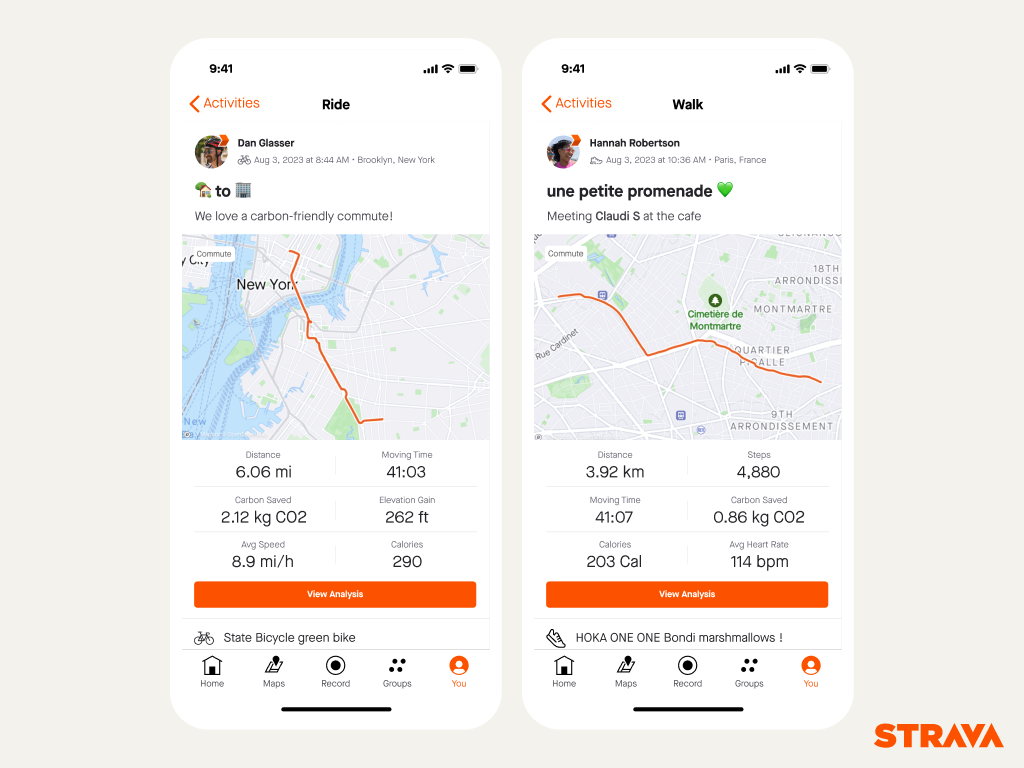
Ideal for: Social motivation and community challenges
- Segment leaderboards, global events, and customizable group challenges
- Beacon safety-sharing sends live location to emergency contacts
- Heatmaps reveal the most-run routes in any city
- New 2025 “Coach-Curated Workouts” give free structured sessions without a subscription
Why it shines in 2025: Strava’s revamped privacy controls let you hide start/finish points and restrict followers—reassuring runners concerned about location tracking.
3. Nike Run Club

Ideal for: Free guided runs and uplifting audio coaching
- Extensive library of audio-guided runs led by Nike coaches and elite athletes
- “Speed Runs” with progressive intervals and real-time pacing cues
- Post-run motivation via milestone badges and tailored recovery tips
- Syncs automatically with Apple Music and Spotify playlists
Why it shines in 2025: NRC remains completely free despite new premium-style features like weekly adaptive plans and on-device Apple Watch workouts.
4. MapMyRun by Under Armour

Ideal for: Creating and discovering new routes
- Point-and-click route builder with elevation profiling
- “Live Tracking” for spectators during races
- Shoe-mileage tracking and wear alerts
- Integrates with UA HOVR footwear for cadence and stride-length metrics
Why it shines in 2025: The Discover tab now layers crowd-sourced route safety scores, helping runners avoid poorly lit or high-traffic areas.
5. Runkeeper by ASICS
Ideal for: Beginners wanting simple goal tracking
- Quick-start goals (distance, duration, or frequency) with progress bars
- Five-level training plans—from first 5 K to full marathon
- Audio cues every half-kilometer for pace and heart-rate zones
- Post-run insights highlight negative splits and cadence consistency
Why it shines in 2025: A new “Race Mode” shows predicted finish time and projected split chart mid-run, perfect for race-day pacing.
6. Couch to 5 K (C25K)
Ideal for: Never-ran-before users aiming for that first finish line
- Classic nine-week walk/run progression with three sessions per week
- Motivational tips and form reminders before each interval
- Simple interface reduces data overload—time, distance, and one celebratory graphic when you graduate
- One-time purchase unlocks lifetime access; no recurring fees
Why it shines in 2025: Added voice-feedback support in 12 languages broadens access for international beginners.
7. Pacer
Ideal for: Step-counting and casual runners who don’t need deep metrics
- Auto-detects walks and runs without pressing start
- In-app video workouts for strength and mobility
- Virtual team challenges for office wellness programs
- Works entirely with phone sensors—great for runners without a smartwatch
Why it shines in 2025: Pacer’s revamped “AI Health Coach” now analyzes weekly data to recommend sleep and hydration goals alongside mileage.
8. Garmin Connect
Ideal for: Data-hungry runners with Garmin wearables
- Full analytics suite: cadence, ground-contact time, vertical oscillation, training load, and more
- Daily Readiness Score combines HRV, sleep, and acute training load
- Create complex structured workouts (e.g., “3 × 2 km at half-marathon pace”) and send to your watch
- Seamless export to Strava, TrainingPeaks, and Final Surge
Why it shines in 2025: Garmin’s new running-power metric is now available on every mid-range watch, bringing lab-level insights to mainstream devices.
9. Zwift
Ideal for: Gamified treadmill running
- Immersive 3D worlds with avatar pacing and real-time drafting effects
- Structured workout library by professional coaches
- Community races almost every hour, from 1 mile sprints to half-marathons
- Foot-pod and Bluetooth treadmill support make setup painless
Why it shines in 2025: A new “Free-Run TV” mode streams scenic real-world footage synced to your pace—no subscription required for basic access.
10. Peloton App
Ideal for: Coach-led treadmill classes with high energy
- Thousands of live and on-demand runs, interval sessions, and walk-to-run programs
- Music-licensed playlists updated daily
- Scenic outdoor audio-only runs for phone users
- Cross-training library: strength, yoga, stretching, and mobility
Why it shines in 2025: Peloton’s “Just Run” feature now lets you track outdoor mileage without a class—opening the app to runners who prefer independent workouts but still want Peloton’s community metrics.
What Runners Are Saying in 2025
“Strava keeps me honest—friends see my splits.”
“Runkeeper’s plans felt achievable, and the audio cues are spot-on.”
“I switched to Runna for my first ultra; the adaptive plan nailed my taper.”
These real-world testimonials echo a common theme: the best app is the one you’ll actually open before each run.
Which App Fits Your Goal?
| Goal or Priority | Recommended App(s) |
|---|---|
| Personalized training plans | Runna, Runkeeper |
| Social accountability | Strava, Nike Run Club |
| Building custom routes | MapMyRun |
| Absolute beginners | Couch to 5 K |
| Indoor, gamified workouts | Zwift, Peloton |
| Deep analytics for Garmin devices | Garmin Connect, Strava sync |
| Free or budget-friendly options | Nike Run Club, Couch to 5 K, Pacer |
Use this matrix as a quick filter: pair your top priority with the app built to excel at it, download, and start logging consistent miles—the foundation of every successful training journey.
Key Takeaways
- Top running apps offer features for all skill levels, from beginners using Couch to 5K to advanced runners needing detailed metrics.
- Many quality running apps are free, with premium features available through subscriptions for those wanting more detailed training plans.
- The best apps sync with other devices like watches and earbuds, making tracking easier during your run.
Evaluating Running Apps
When choosing a running app, several key factors can help you find the perfect match for your fitness journey. Not all apps are created equal, and your specific needs should guide your choice.
Key Features to Consider:
- GPS tracking accuracy
- User interface simplicity
- Free vs. premium options
- Social sharing capabilities
- Music integration
- Coaching/training plans
The right app should match your fitness goals. Beginners might prefer apps like Couch to 5K, which offers structured programs to build endurance gradually.
For serious runners, look for detailed metrics. Apps like Strava track pace, distance, elevation, and heart rate data to help improve performance.
App compatibility matters too. Check if the app works with your devices and other fitness tools you use. Many top apps sync with smart watches and heart rate monitors.
The motivation factor can’t be ignored. Some runners thrive with social features that let them compete with friends or join challenges. Others prefer solo tracking with personal goal setting.
Cost is another important consideration. While many apps offer free versions, premium features often require a subscription. Weigh the extra benefits against the price tag.
Battery usage varies widely between apps. Some drain your phone quickly while tracking runs, so check user reviews about this if you plan long runs.
Testing a few options before committing is smart. Many top running apps offer free trials of their premium features.
Key Features of Top Running Apps
Modern running apps offer more than simple distance tracking. They combine GPS technology, data analysis, social features, and personalized coaching to help runners of all levels improve their performance.
GPS Tracking and Route Planning
GPS technology forms the backbone of today’s running apps. Apps like Runkeeper and Map My Run use your phone’s GPS to track every step with impressive accuracy.
Most top apps allow runners to:
- Plan routes before heading out
- Discover popular paths in new areas
- Save favorite routes for easy access
- Get real-time directions during runs
The best apps also include safety features like sharing your location with friends. Some even offer offline maps for trail running in areas with poor cell coverage.
Route planning helps runners avoid busy roads and find scenic paths. Many apps now use augmented reality to highlight turns and landmarks during runs, making navigation easier than ever.
Workout Analysis and Progress Tracking
Data is key to improvement, and running apps excel at collecting it. Apps track and analyze:
Basic Metrics:
- Distance covered
- Pace and speed variations
- Elevation changes
- Calories burned
- Heart rate (with compatible monitors)
More advanced apps like Strava break runs into segments, showing where you slow down or speed up. They create visual graphs of your performance over time.
Progress tracking features help runners see improvements week to week. Many apps award badges or achievements for personal records or consistency streaks. This gamification keeps runners motivated.
Some apps also track shoe mileage, reminding you when it’s time for new running shoes based on your logged distance.
Social Connectivity and Community Challenges
Running doesn’t have to be a solo activity. Top apps create communities where runners support each other. Social features include:
- Sharing runs on social media
- Following friends’ activities
- Giving and receiving kudos
- Commenting on others’ achievements
In-app challenges provide extra motivation. These range from simple daily streak challenges to virtual races with thousands of participants worldwide.
Many apps include leaderboards for popular routes, creating friendly competition. Some even offer club features where local running groups can organize events and track group statistics.
The social aspect helps with accountability and makes running more fun. When friends can see your activity, you’re more likely to stick with your running plan.
Customized Coaching and Training Programs
Gone are the days of generic training plans. Today’s apps offer personalized coaching based on your goals and fitness level.
Top coaching features include:
- Training plans for specific race distances
- Audio coaching during runs
- Real-time feedback on pace and form
- Recovery recommendations
- Cross-training suggestions
Apps like Nike Run Club include guided runs with professional coaches and athletes. Others use AI to adjust your plan based on your performance and recovery.
Some apps connect with fitness tracking wearables to monitor sleep and stress, helping prevent overtraining. The best coaching features adapt to your progress, making them suitable for beginners and experienced runners alike.
Top Running Apps for iOS
iOS users have access to excellent running apps that track progress, offer coaching, and help build healthy habits. These apps use your phone’s GPS to record routes and provide valuable stats.
Strava: The Social Network for Athletes
Strava stands out as a social platform for runners that connects you with a community of athletes. The app tracks your routes, pace, and elevation while letting you compare results with friends.
Key features include:
- Segment challenges where you race against others on popular routes
- Detailed analytics for pace, heart rate, and calories burned
- Training plans for various race distances
The free version offers basic tracking, while the premium subscription unlocks advanced training metrics and safety features. Many serious runners praise Strava for its accuracy and the motivation that comes from sharing achievements.
Strava also integrates with most running watches and fitness trackers, making data collection seamless.
Nike+ Run Club: Personal Trainers and Motivation
Nike Run Club delivers high-quality guided runs and training plans completely free. The app features audio guidance from professional coaches who help you through each workout.
The app excels with:
- Guided runs ranging from 5-minute quick runs to marathon training
- Audio coaching from Nike’s professional trainers
- Achievement badges that reward consistency
Coach Bennett’s motivational cues have become particularly popular among users. The app tracks your progress over time and celebrates milestones like fastest miles and longest runs.
Nike+ also includes photo sharing features and customizable run playlists. Its clean interface makes it easy to start running without complicated setup.
Runkeeper: Your Personal Running Coach
Runkeeper focuses on personalized training with plans that adapt to your fitness level and goals. The app has been around since 2008 and has built a loyal following.
Runkeeper shines with:
- Custom training plans for 5K, 10K, half, and full marathons
- Audio cues that provide real-time updates on pace and distance
- Detailed statistics on calories burned and running efficiency
The app’s interval training feature helps improve speed and stamina. You can set goals based on distance, time, or calories burned.
Runkeeper also offers live tracking for safety and syncs with Apple Health. The premium version adds advanced insights and removes ads.
Top Running Apps for Android
Android users have access to several excellent running apps that can track progress, map routes, and help beginners get started. Each app offers unique features to enhance the running experience.
MapMyRun: Detailed Mapping Features
MapMyRun stands out with its comprehensive mapping capabilities. The app tracks runs with GPS precision, showing exact routes and elevation changes.
Users can create custom routes before heading out or discover popular paths in their area. This feature helps runners explore new neighborhoods safely while tracking their progress.
The app provides real-time audio coaching during runs. It announces pace, distance, and time at regular intervals, which helps runners stay on target without checking their phones.
MapMyRun also connects with many fitness wearables for improved tracking. Its community features let runners share achievements and join challenges with friends.
The detailed post-run analysis includes pace, calories burned, and heart rate data. This information helps runners understand their performance and make improvements for next time.
Pacer: Pedometer and Step Tracking
Pacer excels at step counting and everyday activity tracking. It uses the phone’s built-in sensors to count steps accurately without draining battery life.
The app works in the background, tracking steps throughout the day. Users don’t need to start or stop tracking manually – it just works.
Pacer offers personalized fitness plans based on a user’s goals and current activity level. These plans adapt as fitness improves, providing appropriate challenges.
The app’s GPS tracking features capture walking and running routes. It shows maps of completed activities with distance, pace, and calorie information.
Pacer’s social features create a supportive community. Users can join groups, participate in challenges, and connect with friends for motivation.
The clean interface makes it easy to see daily progress at a glance. Users can quickly check step counts, distance covered, and calories burned without searching through menus.
Couch to 5K: For Beginner Runners
The Couch to 5K app transforms non-runners into 5K finishers through a gradual training program. The 8-week plan starts with walk/run intervals that slowly build endurance.
Audio coaches guide users through each workout. They announce when to run and walk, eliminating the need to watch the screen while exercising.
The program requires just three 30-minute workouts per week. This manageable schedule helps beginners stick with the program without feeling overwhelmed.
Virtual badges and progress tracking provide motivation. Completing each workout brings users closer to their goal, with visible progress on the dashboard.
The app includes helpful tips for beginner runners. Topics cover proper form, breathing techniques, and recovery strategies to prevent injury.
After completing the program, users can move on to 10K training. This natural progression helps maintain motivation after reaching the initial 5K goal.
Cross-Platform Running Apps
Some running apps work equally well on both iOS and Android devices, making them perfect for runners who switch between different platforms or want to share data with friends using different phones.
MyFitnessPal: Comprehensive Fitness Tracking
MyFitnessPal goes beyond just tracking your runs. It connects your running data with your nutrition and overall fitness goals in one place. The app features a massive food database with over 11 million items, making calorie counting simple after your workouts.
Users can set custom goals based on their specific needs. Whether you want to lose weight, maintain, or build muscle while running, MyFitnessPal helps track progress.
The app syncs with over 50 other fitness apps, including many popular running platforms. This connectivity makes it a central hub for all your fitness data.
MyFitnessPal offers both free and premium versions. The premium version removes ads and adds features like macronutrient goals and food analysis tools that runners find helpful for optimizing performance.
Google Fit: Seamless Integration with Android Devices
Google Fit works on both iOS and Android but shines on Android devices with its deep system integration. The app uses your phone’s sensors to automatically track walking, running, and cycling activities.
The app focuses on two key metrics: Move Minutes and Heart Points. Move Minutes track your activity time, while Heart Points reward you for activities that raise your heart rate.
Google Fit connects with many other running apps like Strava and Nike Run Club, pulling data from them into one clean dashboard. This makes it easy to see all your fitness information in one place.
The clean, simple interface makes it easy for beginners to understand their progress. The app is completely free, with no premium tier or hidden costs.
Wahoo Fitness: Connect to Cycling Sensors and Devices
Wahoo Fitness is ideal for athletes who both run and cycle. The app connects to a wide range of fitness sensors including heart rate monitors, cycling cadence sensors, and power meters.
The detailed data tracking includes pace, distance, heart rate zones, and elevation changes. These metrics help serious runners and cyclists improve their training.
Wahoo offers a unique feature that lets you export workouts in various file formats. This makes it easy to transfer your data to other platforms if you decide to switch apps later.
The app works well with Wahoo’s own hardware products like the TICKR heart rate monitor and ELEMNT bike computers. This creates a smooth experience for those invested in the Wahoo ecosystem.
Unlike many competitors, Wahoo Fitness doesn’t push social features. It focuses purely on performance tracking for those who prefer to keep their workouts private.
Fitness and Health Integration
Running apps now connect seamlessly with health platforms and wearable devices. This integration transforms simple run tracking into comprehensive health management by sharing data across your digital fitness ecosystem.
Synchronizing with Health Apps
Modern running apps work hand-in-hand with health platforms like Apple Health and Google Fit. This connection creates a complete picture of your wellness journey.
Apps like Strava and MapMyRun automatically share your running stats with these health hubs. Your miles, calories, and heart rate data flow into one central place.
The best apps don’t just send data one way. They pull in sleep quality, nutrition, and other health metrics to help shape your training plans.
Fitness apps like Fitbit create personalized insights by combining running data with your other health habits. This helps you spot patterns between your running performance and overall health.
Using Wearables and Activity Trackers
Wearable devices supercharge activity tracking by collecting real-time data your phone can’t capture alone. Many running apps connect with multiple brands of watches and trackers.
The most useful integrations include:
- Heart rate monitoring during runs to gauge effort level
- Sleep quality tracking to optimize recovery between workouts
- Step counting throughout the day for total activity assessment
Fitness tracking becomes more accurate when apps pair with devices like Apple Watch, Garmin, and Fitbit. These connections provide detailed metrics like cadence, stride length, and ground contact time.
Some apps even use watch sensors to alert you about form issues during your run. This immediate feedback helps prevent injuries and improves performance.
Additional Features to Enhance Your Running Experience
Modern running apps offer more than just tracking. They connect with your music, support good causes, and help you reach your goals through smart features.
Audio Cues and Music Integration
Running with music can make workouts more fun and help you keep pace. Many top running apps now connect with music services like Spotify and Apple Music.
These apps play your favorite songs while giving voice updates about:
- Current pace
- Distance covered
- Time elapsed
- Calories burned
Some apps like Runkeeper and Strava announce milestones during runs. This helps runners stay on track without checking their phones.
Music features often include tempo-based playlists that match your running speed. This smart function helps runners maintain their target pace through music beat matching.
For safety, many apps allow runners to lower music volume during audio cues, ensuring important updates aren’t missed.
Charity Miles: Earning for Good Causes
Running can now benefit more than just your health. The Charity Miles app turns each step into donations for worthy causes.
How it works:
- Choose a charity from their list
- Track your miles while running
- Corporate sponsors donate based on your distance
Runners can support organizations like World Wildlife Fund, St. Jude’s Hospital, and Habitat for Humanity. The app creates extra motivation by connecting physical activity with helping others.
Many users report running farther and more often when they know their miles support good causes. The app shows your total impact, letting you see exactly how your running efforts help others.
Group challenges are also available, where teams can work together for bigger donations to their chosen charities.
Goal Setting and Achievement Recognition
Effective goal setting is crucial for running progress. Top running apps offer smart goal features that adapt to your ability level.
The best apps include:
- Weekly and monthly distance targets
- Pace improvement goals
- Race training plans
- Streak challenges
Achievement recognition keeps runners motivated through virtual medals, badges, and point systems. These rewards trigger dopamine release, making running more satisfying.
Most apps also send reminders when you’re close to hitting goals. This gentle nudging helps maintain consistency.
Social sharing options let runners post achievements to friends, creating accountability and community support. Some apps even organize local running groups based on similar goals and abilities.
Frequently Asked Questions
Running apps come with different features, pricing models, and platform availability that can make choosing the right one confusing. Here’s what runners most commonly want to know when selecting an app for their training.
What are the top-rated running apps available for iOS?
iOS users have several excellent options for tracking their runs. Strava stands out as a popular choice that lets users track runs and analyze training.
Nike Run Club offers a completely free experience with tracked runs and coached sessions. Many iPhone runners appreciate its clean interface and motivational features.
MapMyRun consistently ranks among the top iOS running apps due to its detailed route mapping and extensive tracking capabilities.
Which Android apps are considered best for runners?
Android users can access most of the same premium running apps as iOS users. The MapMyRun app works excellently on Android devices, providing comprehensive route planning and tracking.
Strava works seamlessly on Android, offering the same social features and training analysis that made it popular on iOS.
Runkeeper has built a strong following among Android users who appreciate its simple interface and reliable tracking features.
Are there any high-quality free running apps for both iOS and Android?
Yes, several top-quality running apps are completely free. Nike Run Club offers its full app experience at no cost across both platforms, including guided runs and tracking features.
Runkeeper’s basic version provides all essential tracking features for free. Users can track time, distance, and pace without paying for premium features.
Strava’s free tier gives runners access to activity tracking and limited social features, though some analysis tools require a subscription.
What are the best running app options for beginners on mobile devices?
New runners should look for apps with simple interfaces and beginner-friendly features. There are plenty of free apps for beginners that track basic metrics like time, distance, and pace.
Couch to 5K programs are built into several apps specifically designed for beginners. These provide structured training plans that gradually build endurance.
Nike Run Club includes guided runs for beginners that provide real-time coaching through headphones during the run.
Which running apps are used by professional athletes?
Professional runners often use Strava to connect with their community and share training insights. The platform’s detailed analytics help them track performance metrics closely.
TrainingPeaks is favored by pros working with coaches due to its advanced planning and analysis tools. It allows for detailed training plans and performance tracking.
Garmin Connect is popular among professional athletes who use Garmin devices to track their training with precision.
Does iOS offer a proprietary app for tracking running activities?
Apple’s built-in Fitness app (formerly Activity) works with Apple Watch to track running workouts. It stores health and fitness data directly in the Apple Health ecosystem.
The Apple Workout app on Apple Watch provides basic run tracking including distance, pace, heart rate, and cadence measurements. These metrics sync automatically with the iPhone Fitness app.
Users can track runs without needing third-party options, though many runners choose specialized apps for more features.

